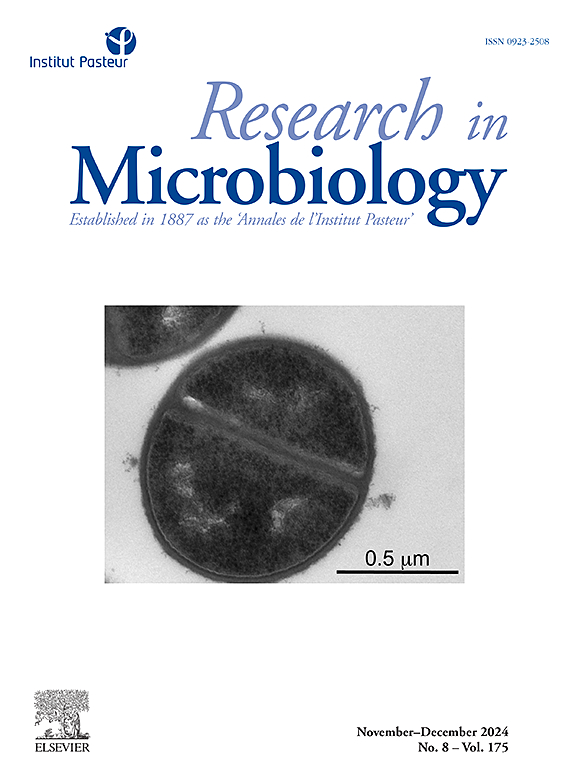MprF 的脂质裂解作用有助于 B 群链球菌中溶血性色素的保留。
IF 3.4
4区 生物学
Q3 MICROBIOLOGY
引用次数: 0
摘要
B 群链球菌(GBS)是新生儿败血症和脑膜炎的主要病因。其主要致病因子是一种具有鸟氨酸鼠李糖脂结构的色素性β-溶血/细胞溶血素(β-h/c)毒素。我们最初观察到,缺少 MprF 酶会改变 GBS 的色素沉着和溶血活性。接着,我们发现 MprF 依赖性脂质裂解有助于鸟氨酸鼠李糖脂在 GBS 膜内的保留。此外,MprF 的阳离子脂化作用改变了膜的特性,有助于抵抗环脂肽达托霉素和酸性 pH。这项研究强调了阳离子脂质在细胞膜平衡和调节β-h/c活性中的重要性。本文章由计算机程序翻译,如有差异,请以英文原文为准。
Lipid lysination by MprF contributes to hemolytic pigment retention in group B Streptococcus
Group B Streptococcus (GBS) is the leading cause of neonatal sepsis and meningitis. A major virulence factor is a pigmented beta-haemolytic/cyto-lysin (β-h/c) toxin with an ornithine rhamnolipid structure. We initially observed that absence of MprF enzyme altered pigmentation and haemolytic activity in GBS. Next, we showed that MprF-dependent lipid lysination contributes to the retention of the ornithine rhamnolipid within GBS membrane. Furthermore, cationic lipidation by MprF altered membrane properties contributing to resistance to the cyclic lipopeptide daptomycin and to acidic pH. This study highlights the importance of cationic lipids in cell envelope homeostasis and in modulating β-h/c activity.
求助全文
通过发布文献求助,成功后即可免费获取论文全文。
去求助
来源期刊

Research in microbiology
生物-微生物学
CiteScore
4.10
自引率
3.80%
发文量
54
审稿时长
16 days
期刊介绍:
Research in Microbiology is the direct descendant of the original Pasteur periodical entitled Annales de l''Institut Pasteur, created in 1887 by Emile Duclaux under the patronage of Louis Pasteur. The Editorial Committee included Chamberland, Grancher, Nocard, Roux and Straus, and the first issue began with Louis Pasteur''s "Lettre sur la Rage" which clearly defines the spirit of the journal:"You have informed me, my dear Duclaux, that you intend to start a monthly collection of articles entitled "Annales de l''Institut Pasteur". You will be rendering a service that will be appreciated by the ever increasing number of young scientists who are attracted to microbiological studies. In your Annales, our laboratory research will of course occupy a central position, but the work from outside groups that you intend to publish will be a source of competitive stimulation for all of us."That first volume included 53 articles as well as critical reviews and book reviews. From that time on, the Annales appeared regularly every month, without interruption, even during the two world wars. Although the journal has undergone many changes over the past 100 years (in the title, the format, the language) reflecting the evolution in scientific publishing, it has consistently maintained the Pasteur tradition by publishing original reports on all aspects of microbiology.
 求助内容:
求助内容: 应助结果提醒方式:
应助结果提醒方式:


